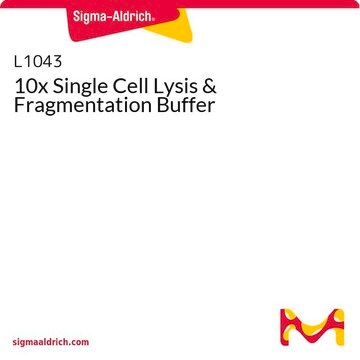MCL1
Mammalian Cell Lysis Kit
Synonym(s):
Cell Lysis Reagent
About This Item
Recommended Products
usage
kit sufficient for 250 extractions (100 mm tissue culture plates)
Quality Level
technique(s)
immunoprecipitation (IP): suitable
shipped in
dry ice
storage temp.
−20°C
Application
Mammalian cell lysis kit was used to test the role of vascular endothelial growth factor (VEGF) receptor-1 and its ligand VEGF-B in motor neuron degeneration.[1]
Features and Benefits
- The kit can be used to prepare cell lysis buffer and other modified buffers
- The kit enables the researcher to change the buffer′s components to obtain maximum efficiency for a specific protein
Components
Kit Components Also Available Separately
- P8340Protease inhibitor cocktail 2.5 mLSDS
signalword
Danger
Hazard Classifications
Acute Tox. 4 Inhalation - Acute Tox. 4 Oral - Aquatic Chronic 3 - Eye Dam. 1 - Skin Irrit. 2 - STOT SE 3
target_organs
Respiratory system
Storage Class
10 - Combustible liquids
flash_point_f
Not applicable
flash_point_c
Not applicable
Choose from one of the most recent versions:
Certificates of Analysis (COA)
Don't see the Right Version?
If you require a particular version, you can look up a specific certificate by the Lot or Batch number.
Already Own This Product?
Find documentation for the products that you have recently purchased in the Document Library.
Customers Also Viewed
Our team of scientists has experience in all areas of research including Life Science, Material Science, Chemical Synthesis, Chromatography, Analytical and many others.
Contact Technical Service















